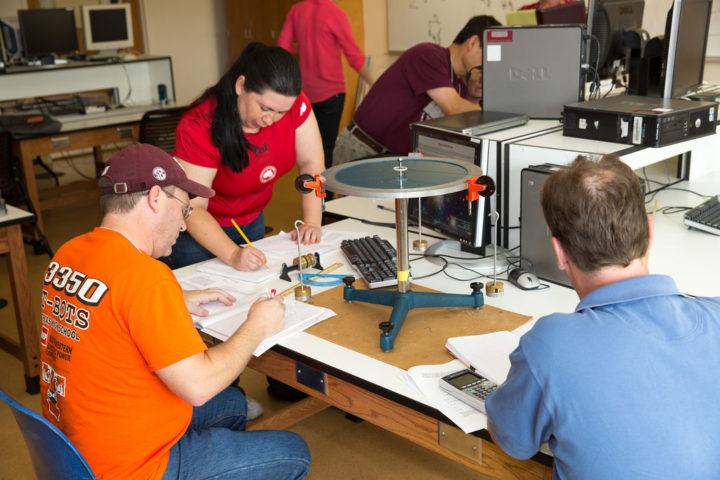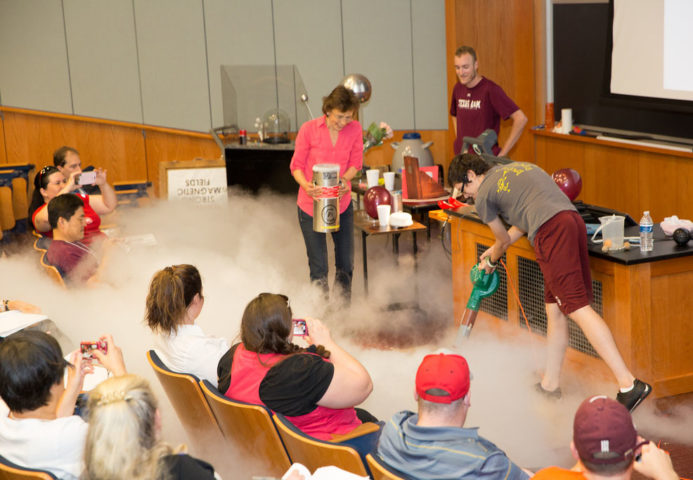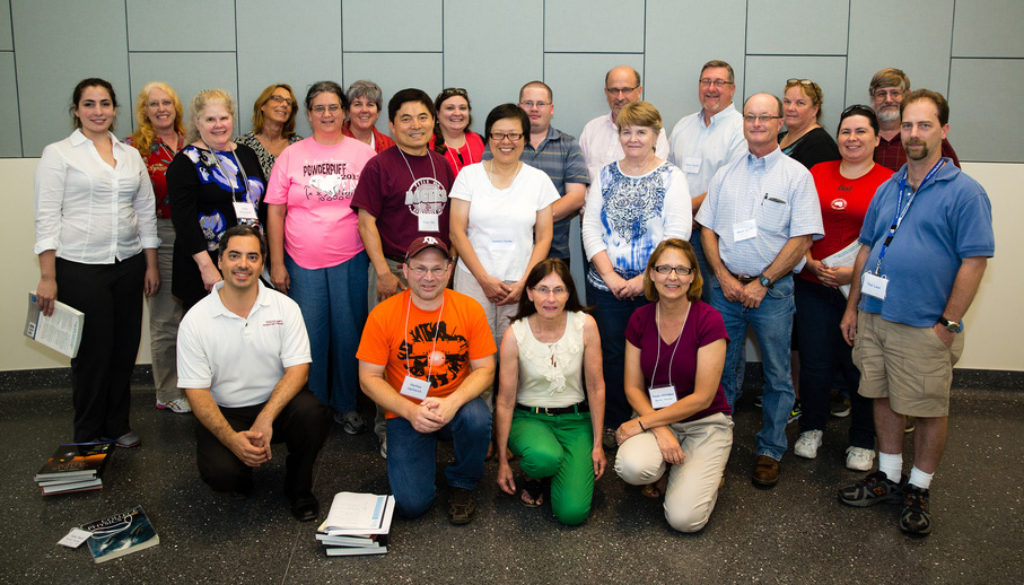DOWN TO A SCIENCE: Texas A&M Physics Faculty Teaching Teachers for Texas
Paula Hiltibidal muddled through teaching high school physics in the 1990s at Richland High School near Fort Worth. Then one day, a colleague told her about a program at Texas A&M University run by then-Texas A&M physics professor Robert Clark that aimed to teach high school teachers basic physics concepts so they would be better prepared in the classroom.
“It was life-changing,” Hiltibidal said of the Physics Enhancement Program, which was funded in part by the National Science Foundation. “The program took me from being an overwhelmed teacher to a confident, lifelong learner. I wasn’t afraid of teaching physics anymore.”


Although that program no longer exists, Hiltibidal is helping to coordinate a similar Texas A&M effort now in its second year of working to improve the state of physics education across Texas. More than a dozen faculty from the Texas A&M Department of Physics and Astronomy are volunteering their time to teach key physics concepts to 18 high school teachers from around the state. The intensive two-week training, known as the Mitchell Institute Physics Enhancement Program (MIPEP), started June 16 and continues through June 29. The program is underwritten by the Cynthia and George Mitchell Foundation using funds provided through the Texas A&M Foundation.
“Most high schools have poor physics education because it’s being taught by people with little or no training in physics,” said Texas A&M physics professor Bhaskar Dutta, a program coordinator who also serves as interim director of the George P. and Cynthia Woods Mitchell Institute for Fundamental Physics and Astronomy.
Participating teachers are learning key concepts and subjects such as mechanics, electricity and magnetism, all while surrounded by nature at the sprawling Cook’s Branch Conservancy, some 5,600 acres in Montgomery County owned by Mitchell, a 1940 Texas A&M distinguished petroleum engineering graduate and longtime benefactor of the university and its physics and astronomy programs. Dutta said the natural environment is both conducive to learning and helpful in minimizing lodging expenses that otherwise would be incurred in College Station.
Hiltibidal, who spent 23 years teaching in Texas public schools also earned a master’s degree from Texas A&M in educational curriculum and instruction in 2001, now serves as a high school science specialist at the Region 15 Education Service Center (ESC), which is based in San Angelo and is one of 20 service centers that assist the Texas Education Agency in implementing its goals. She and Dutta worked with Texas A&M physics faculty Alexey Belyanin and Tatiana Erukhimova to organize the program in time for a successful debut in June 2012. Hiltibidal and Janie Head, a physics teacher at Foster High School in Lamar Consolidated Independent School District who will complete her Ph.D. in curriculum and instruction from Texas A&M this December, use their years of classroom experience along with their association with the Texas Regional Collaboratives and the American Association of Physics Teachers to serve as master teachers for MIPEP, while the Texas A&M professors volunteer as the physics content experts.
Texas A&M’s commitment to the teachers goes beyond these two weeks, Dutta said. Just as important — or perhaps more so — is an email listserv that keeps the teachers connected with the Texas A&M faculty members throughout the school year.
“So when they’re stuck on a problem, the teachers don’t have to come to the university,” he said. “The university comes to them.”
The program addresses an important national challenge, Dutta said. American students, and Texans especially, lag far behind their international peers in science education. Dutta attributes that to poorly trained teachers: Many science teachers have taken between zero and two physics courses in college.
Dutta said that leading educators concluded that two full weeks of rigorous physics education training at the level of physics 201 and 202 could be a tremendous benefit in preparing the teachers to teach in high school classrooms across Texas. This was the motivation behind MIPEP, Dutta said.
“We realize that training 18 teachers for two weeks isn’t enough,” Dutta said. “But if we can show that this is effective, I think the state and universities like Texas A&M and the University of Texas should step in with support for programs like this to help improve high school science education in Texas.”
Find more information about the Mitchell Institute Physics Enhancement Program.
Click here to view additional photographs of related events at both Cook’s Branch and on the Texas A&M campus.
To learn more about the Mitchell Institute, visit http://mitchell.physics.tamu.edu/.
For more information about the Department of Physics and Astronomy, visit http://physics.tamu.edu/.
-aTm-
Contact: Vimal Patel, (979) 845-7246 or vpatel@science.tamu.edu or Dr. Bhaskar Dutta, (979) 845-5359 or dutta@physics.tamu.edu
The post DOWN TO A SCIENCE: Texas A&M Physics Faculty Teaching Teachers for Texas appeared first on Texas A&M College of Science
